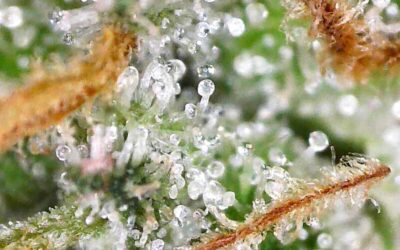
The Science of Terpenes
How They Affect Your Cannabis Experience
When most people think about cannabis, they often focus on THC and CBD, the primary compounds responsible for the plant’s psychoactive and medicinal effects. However, there’s another critical group of compounds that play a significant role in the cannabis experience: terpenes. These aromatic molecules not only give cannabis its distinct smell and flavour but also interact synergistically with cannabinoids to influence the effects of different strains. In this post, we delve into the science of terpenes and how they affect your cannabis experience.
What Are Terpenes?
Terpenes are organic compounds found in many plants, including cannabis. They are responsible for the wide range of aromas and flavours in the plant kingdom. In cannabis, terpenes are produced in the same glands that produce cannabinoids, called trichomes. Over 200 terpenes have been identified in cannabis, each contributing to the plant’s unique scent profile and potentially influencing its effects.
The Role of Terpenes in Cannabis
Aromatic Diversity
Terpenes are the primary reason why different cannabis strains have distinct smells. For example, the citrusy aroma of Lemon Haze is due to the presence of limonene, while the earthy scent of OG Kush is attributed to myrcene. These aromatic profiles can enhance the user experience by making cannabis more enjoyable to consume.
The Entourage Effect
One of the most intriguing aspects of terpenes is their ability to interact with cannabinoids, a phenomenon known as the entourage effect. This concept suggests that the compounds in cannabis work together to produce effects that are greater than the sum of their parts. For instance, myrcene is believed to enhance the psychoactive effects of THC, while limonene might elevate mood and reduce anxiety. This synergy means that the terpene profile of a strain can significantly impact its overall effects.
Common Terpenes and Their Effects
Myrcene
Myrcene is one of the most prevalent terpenes in cannabis. It has a musky, earthy aroma and is also found in hops, thyme, and lemongrass. Myrcene is known for its sedative properties and is often associated with the “couch-lock” effect of indica strains. It also has anti-inflammatory and analgesic effects, making it beneficial for pain relief.
Limonene
Limonene has a bright, citrusy scent and is commonly found in citrus fruits. This terpene is known for its uplifting and mood-enhancing properties. It has potential anti-anxiety and antidepressant effects, which can help counteract the paranoia some people experience with high-THC strains. Limonene also has anti-fungal and antibacterial properties.
Pinene
Pinene, which smells like pine needles, is another common terpene in cannabis. It exists in two forms: alpha-pinene and beta-pinene. Pinene is known for its anti-inflammatory, bronchodilator (improving airflow to lungs), and memory-enhancing effects. Strains high in pinene may help improve focus and counteract some of the short-term memory loss associated with THC.
Linalool
Linalool has a floral, lavender-like aroma and is also found in lavender and coriander. This terpene is known for its calming and sedative effects, making it beneficial for stress relief and insomnia. Linalool also has analgesic and anti-anxiety properties.
Caryophyllene
Caryophyllene has a spicy, peppery scent and is found in black pepper, cloves, and cinnamon. It’s unique because it can bind to cannabinoid receptors in the body, specifically the CB2 receptor, making it an anti-inflammatory agent. Caryophyllene is also known for its potential to alleviate pain and anxiety.
Terpenes and Personalised Cannabis Experiences
Understanding terpenes can help consumers choose the right cannabis strains for their needs. For instance, someone seeking relief from anxiety might opt for a strain high in limonene and linalool, while someone looking to alleviate pain might prefer a strain rich in myrcene and caryophyllene. As cannabis science progresses, there is a growing interest in breeding and cultivating strains with specific terpene profiles to tailor the cannabis experience more precisely.
Terpenes play a crucial role in shaping the cannabis experience, influencing not only the aroma and flavour of different strains but also their effects. By understanding the science of terpenes and their interactions with cannabinoids, consumers can make more informed choices and find strains that best suit their preferences and therapeutic needs. As research continues to uncover the complexities of these fascinating compounds, the future of cannabis looks increasingly personalised and sophisticated. Whether you’re a seasoned user or new to cannabis, exploring the world of terpenes opens up a deeper appreciation of this remarkable plant.







































































